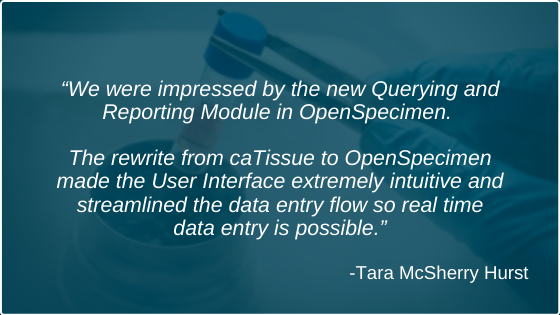
The Tumor Tissue and Biospecimen Bank (TTAB) at the University of Pennsylvania (Upenn) collects and stores biospecimens for lung cancer, breast cancer, hematologic malignancies, head and neck cancer, GU cancers, and melanomas. TTAB was established as a partnership between the Abramson Cancer Center (ACC) and the Department of Pathology and Laboratory Medicine with a vision to provide investigators with the resources and organizational capabilities to maximize the potential of using the tissue and other biospecimens for basic and translational research.
In addition to tissue and biospecimen banking, the core has been tirelessly working to define data-driven standards for tissue and biospecimen banking practices at UPenn. Dr Michael Feldman has directed biospecimen-related services for the ACC since 2004. The ACC supports centralized tumour and control specimen storage which is available to all ACC members since 2008. TTAB has recently expanded to include samples from large community and population-based studies. TTAB also provides services to research scientists, supporting their bio sampling and data sharing.
“In 2014, TTAB became the tissue processing Core for the Penn Medicine BioBank. Together, TTAB and BioBank will continue to provide services for the UPenn research community. TTAB is currently housing a biosample inventory comprising of 65K+ biosamples.” said Federico – Valdivieso.
Challenges Faced by TTAB Team
UPenn had participated in the caBIG project and adopted caTissue through that initiative.
The TTAB team was facing a number of issues with their old system –
- caTissue’s performance was slow and this made real-time data entry a challenge.
- caTissue’s query interface left a lot to be desired. The user needed to know the database schema to formulate queries. Many queries beyond very basic searches were not possible through the UI.
“Queries were slow and would basically just provide raw data dumps. We wanted to be able to quickly run queries and get usable results back without knowing the entire backend data model.” Tara McSherry-Hurst explained.
Moving to OpenSpecimen
After the caBIG project concluded TTAB team explored the idea of using various other systems. However, they decided to migrate from caTissue to OpenSpecimen because
- There was a clear migration path from caTissue to OpenSpecimen.
- They were impressed by the new Reporting Module in OpenSpecimen.
- The rewrite from caTissue to OpenSpecimen made the User Interface extremely intuitive and streamlined the data entry flow so real-time data entry is possible.
“We found out about OpenSpecimen through the caBIG/caTissue communications. Coming from caTissue, OpenSpecimen was a natural choice,” said Tara McSherry-Hurst.
OpenSpecimen is Intuitive, Quicker, and Feature-rich
Upenn switched from caTissue to OpenSpecimen in 2019. OpenSpecimen developers provided support for data migration. The TTAB team feels the migration went smoothly. They are satisfied with their decision to move to OpenSpecimen as it is quicker, more intuitive and more feature-rich than caTissue.
“We have purchased a service agreement for support, and we find the developers to be responsive and helpful with any issues, questions, or requests that arise,” added Tara McSherry Hurst.
